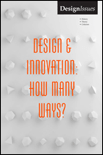
DESIGN ISSUES
Scope & Guideline
Fostering Insightful Dialogues in Arts and Humanities
Introduction
Aims and Scopes
- Interdisciplinary Design Perspectives:
The journal focuses on the intersection of design with various fields including ethics, technology, sociology, and politics, fostering a holistic understanding of design's impact. - Ethical and Moral Dimensions of Design:
A consistent theme is the exploration of ethical implications in design practices, emphasizing moral engagement and responsibility within the design community. - Cultural and Historical Contexts:
Design Issues delves into the historical and cultural contexts of design, analyzing how these factors shape design practices and ideologies. - Innovative Design Methodologies:
The journal promotes creative methodologies in design, encouraging the use of new tools and approaches to enhance the design process and outcomes. - Social Justice and Community Engagement:
A core focus is on design justice and community-led practices, highlighting the role of design in addressing social inequalities and fostering inclusivity.
Trending and Emerging
- Sustainable and Eco-centric Design:
Recent publications emphasize eco-centric design practices, reflecting a growing awareness of environmental challenges and the need for sustainable solutions in design. - Design Activism and Social Change:
There is an increasing focus on design as a tool for activism, highlighting the role of design in promoting social justice, community engagement, and political change. - Integration of Technology in Design:
Emerging themes include the integration of technology and digital tools in the design process, showcasing innovative methodologies that enhance creativity and collaboration. - Experiential and User-Centered Design:
A trend towards experience-centered design is evident, with a focus on understanding user interactions and the importance of empathy in the design process. - Interdisciplinary Collaboration:
The journal is increasingly publishing works that highlight collaborative efforts across disciplines, showcasing how diverse perspectives can enrich the design process.
Declining or Waning
- Traditional Design Theory:
There appears to be a decrease in articles focused on conventional design theories without critical engagement, as the journal increasingly prioritizes contemporary and socially relevant frameworks. - Purely Aesthetic Design Discussions:
Papers that center solely on aesthetic considerations without addressing broader implications or contexts are less frequent, indicating a shift towards more functional and ethical discussions. - Narrowly Defined Design Disciplines:
There is a noticeable decline in articles that strictly adhere to singular design disciplines, as the journal now favors interdisciplinary approaches that integrate various aspects of design. - Historical Case Studies with Limited Contemporary Relevance:
While historical perspectives remain important, there is a waning interest in case studies that do not connect to current design challenges or societal issues.
Similar Journals

Architecture_MPS
Enhancing Visibility for Groundbreaking ResearchArchitecture_MPS is a premier open-access journal published by UCL PRESS, dedicated to exploring the interconnections between architecture, urbanism, and the broader spectrum of social and cultural dynamics. Launched in 2012, this journal stands as a crucial platform for researchers, practitioners, and students alike, facilitating the exchange of innovative ideas and comprehensive scholarship in the field. With its commitment to open access, Architecture_MPS significantly enhances the visibility and accessibility of research, fostering a collaborative environment for academic discourse. The journal covers a diverse array of topics, including theoretical frameworks, policy analysis, and practical case studies, making it an invaluable resource for those engaged in the study and practice of architecture and allied disciplines. As a leading source of contemporary research, Architecture_MPS aims to bridge gaps between academia and practice, encouraging interdisciplinary dialogues that shape the future of architecture and urban studies.
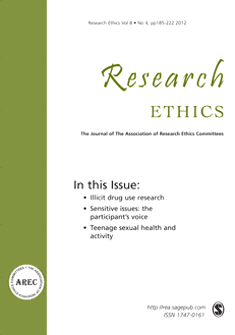
Research Ethics
Empowering Researchers to Uphold Ethical Standards.Research Ethics is a leading journal published by SAGE Publications Inc that fosters scholarly discourse at the intersection of ethical considerations and research practices. As an Open Access platform since 2018, it ensures that critical insights on ethical dilemmas faced by researchers are freely available to a global audience, significantly enhancing its reach and impact. With an impressive impact factor reflected in its Q1 and Q2 rankings in Philosophy and Education respectively for 2023, this journal occupies a vital space for researchers and professionals aiming to navigate the complex ethical landscape of contemporary research. As indicated by its strong Scopus rankings, falling into the 95th percentile in Arts and Humanities (Philosophy) and 77th percentile in Social Sciences (Education), Research Ethics is essential for anyone interested in contributing to or understanding ethical practices in research. The journal encompasses a broad scope, encouraging submissions that explore diverse aspects of research ethics, promoting high standards and integrity across disciplines. Join a community dedicated to advancing ethical research methodologies and contributing meaningfully to the dialogue that shapes the future of moral practices in academia.

Design Journal
Elevating Design Knowledge for a Dynamic FutureDesign Journal, published by Routledge Journals, Taylor & Francis Ltd, serves as a pivotal platform for interdisciplinary research within the expansive fields of Arts and Humanities as well as Computer Graphics and Computer-Aided Design. With an ISSN of 1460-6925 and an E-ISSN of 1756-3062, this journal is dedicated to disseminating innovative ideas and methodologies that shape contemporary design practices. Ranked in the Q2 category in Arts and Humanities and Q3 in Computer Graphics per the 2023 category quartiles, it stands as a reference point for scholars and practitioners alike, fostering a vibrant community for sharing knowledge and fostering creativity. Researchers will find the journal's scope particularly valuable as it covers a diverse range of topics, providing insights critical for advancing knowledge and practice. With the journal continuing to evolve—converging research avenues from 2005 to 2024—it thrives as a beacon of scholarly excellence in the United Kingdom and beyond, appealing to professionals, researchers, and students eager to engage with cutting-edge design discourse.
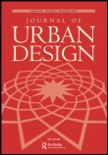
Journal of Urban Design
Exploring the nexus of creativity and sustainability in urban planning.Journal of Urban Design, published by Routledge Journals, Taylor & Francis Ltd, stands at the forefront of academia, providing a critical forum for discourse on contemporary urban design practices and theories since its inception in 1996. With an impressive impact factor and consistently ranking in the Q1 category across multiple fields—namely Arts and Humanities, Geography, Planning and Development, and Urban Studies—this journal is recognized for its significant contributions to the understanding and shaping of urban environments. Although it does not offer open access, its meticulously curated content remains accessible to those keen on exploring innovative urban design thinking. Researchers, professionals, and students alike will find valuable insights and methodologies aimed at enhancing urban spaces globally, making the journal a vital resource for those committed to the evolution of urban planning and sustainable development strategies.

Open House International
Shaping Innovative Discussions on the Built EnvironmentOpen House International is a distinguished peer-reviewed journal that serves as a vital resource in the fields of Architecture, Urban Studies, and Geography, Planning and Development. Published by Emerald Group Publishing Ltd, the journal circulates valuable insights and research findings that address contemporary challenges and innovations within urban environments. With an impressive 2023 Scopus ranking that places it in the Q2 category in Architecture and Q3 in Geography, Planning and Development, the journal is recognized for contributing significantly to scholarly discourse. Although it follows a traditional access model, the journal's commitment to curating high-quality content remains paramount. As it transitions into a new decade of publishing, from 2007 to 2024, Open House International continues to attract submissions that push the boundaries of knowledge in urban and architectural studies, engaging researchers, professionals, and students alike in the vibrant dialogue on the built environment.
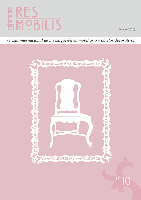
Res Mobilis-International Research Journal of Furniture and Decorative Objects
Exploring the Intersection of Design and CultureRes Mobilis - International Research Journal of Furniture and Decorative Objects is a pioneering academic platform committed to advancing research in the field of furniture design, decorative arts, and their cultural significance. Published by UNIV OVIEDO, this esteemed open-access journal has been serving the scholarly community since 2012, making cutting-edge research readily accessible to researchers, professionals, and students across the globe. With an impressive categorization in Q1 and Q2 quartiles for the Visual Arts and Performing Arts and History respectively, and a diverse scope that encompasses anthropology and social sciences, Res Mobilis plays a crucial role in facilitating multidisciplinary discourse. Based in the vibrant academic landscape of Asturias, Spain, the journal is dedicated to promoting innovative perspectives and fostering collaboration among interdisciplinary scholars. With its rich context and open-access model, it stands as an essential resource for those interested in exploring the interplay between design, culture, and society.

ARCHITECTURAL HISTORY
Navigating the Rich Tapestry of Architectural HistoryARCHITECTURAL HISTORY is a renowned journal published by Cambridge University Press, dedicated to advancing the field of architecture through scholarly research and critical analysis. Operating under ISSN 0066-622X and E-ISSN 2059-5670, this academic journal plays a pivotal role in disseminating knowledge related to the historical and theoretical dimensions of architecture. Though currently not open access, it offers invaluable insights for researchers and professionals interested in the evolution of architectural practices, spanning from the year 2002 to 2009 and continuing from 2011 to 2023. With a Q4 ranking in Architecture and a Q3 ranking in Visual Arts and Performing Arts as of 2023, ARCHITECTURAL HISTORY is well-positioned to contribute to the ongoing discourse in these fields. Furthermore, it holds commendable placements within the Scopus rankings, specifically 322/667 in Visual Arts and Performing Arts and 139/189 in Architecture, reflecting its growing influence. This journal serves not only as a platform for in-depth research but also as a critical space for scholarly exchange, making it an essential resource for students and academics alike who aspire to deepen their understanding of architectural heritage and its impact on contemporary practices.
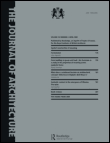
Journal of Architecture
Connecting theory and practice in contemporary architecture.Journal of Architecture, published by ROUTLEDGE JOURNALS, TAYLOR & FRANCIS LTD, stands as a pivotal platform for scholarly discourse in the ever-evolving field of architecture. Established in 1996, this esteemed journal boasts an impressive impact factor, categorized as Q2 in Architecture and Q1 in Visual Arts and Performing Arts, reflecting its significant contribution to both disciplines. With a robust Scopus ranking positioning it in the 85th percentile among Visual Arts and Performing Arts and the 57th percentile within Engineering Architecture, the journal serves as an essential resource for researchers, professionals, and students alike. The Journal of Architecture features innovative research and thoughtful analysis that shape contemporary architectural practices and theories, encouraging interdisciplinary dialogue. Engaging with this journal allows readers to stay abreast of critical advancements and emerging trends, fostering a deeper understanding of architecture's role in societal transformation.

Landscape Architecture Frontiers
Exploring the intersection of ecology and urbanism.Landscape Architecture Frontiers, an esteemed journal published by Higher Education Press, serves as a pivotal platform for the dissemination of innovative research and critical thinking within the field of landscape architecture. Recognized for its commitment to advancing global discourse on sustainable design, environmental stewardship, and urban ecology, the journal's content is crucial for researchers, professionals, and students alike who are dedicated to shaping the future of landscape architecture. With a diverse range of topics covered, including landscape planning, restoration ecology, and cultural landscapes, this journal aims to foster interdisciplinary collaboration and promote best practices in the discipline. Although specific metrics like the impact factor and HIndex are not provided, the journal's reputation within the academic community underlines its significance in contributing to ongoing education and professional development in landscape architecture. For those interested in open access options, Landscape Architecture Frontiers encourages engagement and wider readership through its research, making it an essential resource for anyone passionate about the transformative power of landscapes and public spaces.
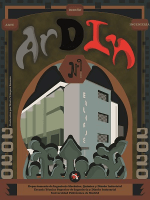
ArDIn-Arte Diseno e Ingenieria
Innovating Design through Interdisciplinary CollaborationArDIn-Arte Diseno e Ingenieria is a prominent open-access journal published by UNIV POLITECNICA MADRID, dedicated to advancing the fields of design and engineering. Since its inception in 2012, this journal has rapidly become an essential resource for researchers, professionals, and students alike, focusing on the integration of innovative practices and methodologies within the realms of art, design, and engineering. With an E-ISSN of 2254-8319, ArDIn fosters a platform for scholarly discussions, disseminating significant original research, reviews, and case studies that push the boundaries of interdisciplinary collaboration. Based in Madrid, Spain, the journal emphasizes the importance of accessibility in academic publishing, ensuring that a diverse audience can benefit from its high-quality content. As ArDIn continues to grow in reputation and impact, it remains committed to enhancing the knowledge landscape within the ever-evolving field of design and engineering.